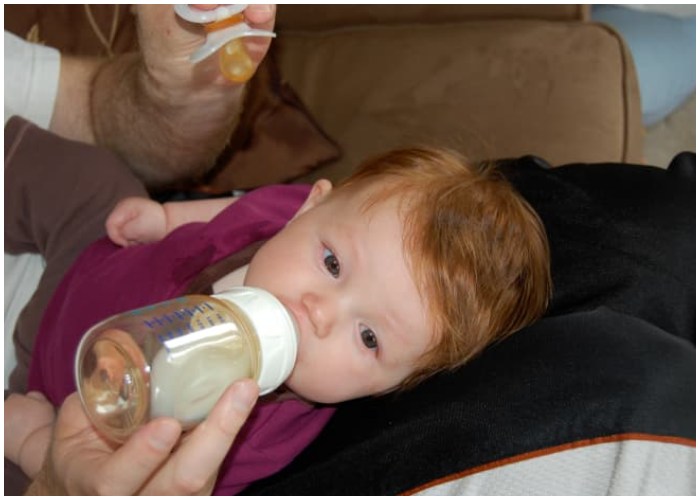When your breastfed baby refuses to take a bottle, it can be stressful and worrisome. Whether you’re transitioning back to work or want someone else to help with feedings, bottle refusal can feel like a significant hurdle. The good news is that most babies refusing a bottle are simply adjusting to a new feeding method, and with time and patience, they usually get the hang of it.
In this guide, we’ll explore the common reasons why babies refuse bottles, tips for helping them adapt, and what to do if the situation doesn’t improve.
Common Reasons for Bottle-Feeding Problems
Bottle refusal can look different for every baby. Some signs that your baby may be struggling with bottle-feeding include:
- Turning away from the bottle
- Gagging or fussing when the nipple nears their mouth
- Inability to latch onto the nipple or compress it to express milk
- Chewing on the nipple
- Sputtering or coughing during feeding
- Milk dribbling out of their mouth without swallowing
While these behaviors can be frustrating, they are often temporary and simply reflect the learning curve of adapting to bottle-feeding.

Why Some Babies Struggle with the Transition to a Bottle
One of the most common reasons breastfed babies struggle with bottles is late introduction. Babies are born with a natural sucking reflex, but by 2 to 3 months old, this reflex becomes voluntary. At this stage, babies may develop a preference for breastfeeding, having learned how to handle the milk flow and texture of the breast. Introducing a bottle after this period can make the transition more challenging.
When switching to a bottle, babies must adjust to the different nipple shape, milk flow, and feeding position. These changes can be overwhelming, leading to fussiness and resistance.
When to Introduce a Bottle to a Breastfed Baby
Timing is key when introducing a bottle to a breastfed baby. You don’t want to introduce it too early, which could interfere with breastfeeding, but waiting too long may make the transition harder. Most experts recommend introducing a bottle between 2 and 4 weeks after birth, once breastfeeding is well established.
Tips for Getting a Breastfed Baby to Take a Bottle
Here are five strategies to help your baby adapt to bottle-feeding:
1. Alternate Between Breast and Bottle Switching between breastfeeding and bottle-feeding regularly can help your baby develop their feeding skills. Incorporating both methods from an early stage helps your baby get used to the different milk flows and textures.
2. Offer the Bottle When Your Baby Is Waking Up Babies are more likely to accept a bottle when they’re still sleepy. Their instinct to eat is stronger when they’re just waking up, making it a good time to try bottle-feeding. Be careful not to let your baby get too hungry, as this can lead to fussiness and frustration.
3. Create a Relaxing Environment Feeding in a calm, quiet space can help your baby focus on the bottle. Play soothing music, gently rock your baby, or swaddle them to create a comfortable setting. Babies can sense the energy of those around them, so staying relaxed during the transition is essential.
4. Have Someone Other Than Mom Offer the Bottle Having another family member or caregiver offer the bottle can help ease the transition. Babies may associate their mother with breastfeeding, making it harder for them to accept a bottle. Having someone else feed them helps your baby adjust to different positions and approaches to feeding.
5. Experiment with Different Bottles and Nipples Not all bottles and nipples are the same, and finding the right one can make a big difference. Try different shapes, sizes, and flow rates until you find one that works for your baby. If you’re unsure where to start, your baby’s pediatrician or a lactation consultant can help guide you.

Adjusting Bottle-Feeding Positions
Sometimes, your baby may refuse a bottle because of discomfort with the feeding position. Here are a few positions to try:
- Cradle Hold: Hold your baby at a 45-degree angle, with their head and neck aligned.
- Upright Position: Sit your baby upright against your stomach, supporting their head and neck.
- Lap Position: Lay your baby in your lap, facing you, with their head against your knees and their feet on your stomach.
Experiment with these positions to find what’s most comfortable for your baby.
When to Seek Professional Help
If your baby continues to refuse the bottle despite trying various strategies, it may be time to consult a pediatrician or lactation specialist. Some issues, such as reflux or oral structural differences, can make feeding more difficult. Signs of reflux include arching the back during feeding, crying, coughing, and refusing to drink more than an ounce of milk. If these symptoms persist, a medical evaluation may be necessary.
Oral structural differences, such as tongue-tie or a high palate, can also interfere with feeding. A specialist, such as a speech therapist or occupational therapist, can assess your baby’s oral motor function and recommend solutions.